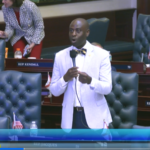A.M. Best Europe – Rating Services Limited has downgraded the issuer credit rating (ICR) to “bbb” from “bbb+” and affirmed the financial strength rating (FSR) of ‘B++’ (Good) of Egypt’s Arab Misr Insurance Group S.A.E. (AMIG), and has revised its outlook on both ratings to negative from stable. Best explained that the downgrading of the ICR of AMIG reflects its “view of the increased financial and political risks associated with Egypt as indicated by the country’s reclassification from CRT-4 to CRT-5, and AMIG’s increased exposure to Egyptian sovereign debt, albeit largely short term.” Best added that despite the difficult operating environment, “AMIG’s financial position remains sound given its strong risk-adjusted capitalization as measured by Best’s Capital Adequacy Ratio (BCAR) and its continuing sound technical performance. Furthermore, the company has continued to improve its domestic franchise, now ranking as Egypt’s third-largest insurer by premiums.” These factors, combined with the results of Best’s stress tests for a sovereign default, support its decision to maintain secure ratings on AMIG. Furthermore, the ratings benefit from the implied support of AMIG’s parent, Gulf Insurance Company K.S.C. (GIC). “The outlook for both the ICR and FSR has been revised to reflect the ongoing financial and political uncertainty in Egypt,” Best said. In the rating agency’s opinion, “AMIG’s risk-adjusted capital position has been improving in recent years through the full retention of profits, which has outpaced capital consumption on a risk-adjusted basis. However, AMIG’s investment portfolio is a source of concern, particularly given that the increased sovereign debt exposure followed Best’s downgrading of the risk tier of Egypt and has coincided with the negative pressure on the creditworthiness of Egypt’s sovereign debt.” Best said its stress tests indicate that “the company would be able to withstand a haircut of 40 percent on its sovereign debt exposure whilst still maintaining a secure level of risk-adjusted capitalization,” which Best said it “considers a testament to AMIG’s current capital position. Under the new management team, AMIG’s performance over the last three years has experienced a marked improvement, with its combined ratio averaging just over 90 percent. Furthermore, the company has achieved growth despite the stagnant conditions in the market whilst also maintaining sound technical profits and now ranks as the third-largest insurer in Egypt. AMIG benefits from the support of GIC, which has begun to implement a group-wide enterprise risk management framework. Furthermore, the centralization of some departmental functions, the brand harmonization project and the group-wide reinsurance treaty that has been negotiated by GIC, all support Best’s opinion that parental support is likely to be forthcoming in the event of a crisis.” Best said it is “currently monitoring the economic and political situation in Egypt carefully and expects such external factors to be the likely drivers of any future rating movements, both negative and positive.”
A.M. Best Co. has placed under review with developing implications the financial strength rating of ‘B+’ (Good) and issuer credit rating (ICR) of “bbb-” of Quebec’s L’Union Canadienne, Compangie D’Assurances (L’Union), a subsidiary of Ontario-based Co-operators General Insurance Company. Best said the under review status “follows Co-operators June 6, 2012 announcement of a definitive agreement under which Roins Financial Services Limited (RFSL), an intermediate holding company of the UK’s RSA Insurance Group plc, will acquire L’Union.” Best added that the “ratings will remain under review until completion of the transaction,” and until it conducts further analysis and discussions with management. The transaction is expected to close in the fall of 2012, subject to regulatory approval.”
A.M. Best Europe – Rating Services Limited has affirmed the financial strength rating of ‘A-‘ (Excellent) and the issuer credit rating of “a-” of Kuwait’s Gulf Insurance Company K.S.C. (GIC) and its subsidiary, Gulf Life Insurance Company K.S.C. (Closed) (GLIC), both with stable outlooks. The ratings reflect GIC’s “good regional business profile, good level of overall profitability and supportive level of risk-adjusted capitalization,” Best explained. As a partial offsetting factor Best cited “the company’s volatile investment performance in recent years.” The report also noted that the ratings of GLIC “reflect a rating enhancement from GIC, given the implicit support received, in addition to its sound business profile within Kuwait and a good level of technical profitability. GIC’s good business profile is demonstrated by its strong competitive position within a number of countries in the Middle East North Africa (MENA) region. In addition to GIC’s stand-alone and GLIC’s strong position in Kuwait, a strong market position is also maintained in Bahrain and Jordan via GIC’s subsidiaries, Bahrain Kuwait Insurance Company B.S.C. and Arab Orient Insurance Company. Additionally, in Egypt, GIC has a good market position through its subsidiary, Arab Misr Insurance Group S.A.E. and through its recently acquired subsidiary in Iraq, Dar Al Salaam Insurance Company.” Best indicated that in the future it “expects GIC to maintain a strong business profile in the region, expanding through acquisitions and reinforcing its position in its core markets. Underwriting profits have remained strong in recent years and have been the driver of pre-tax profits. In 2011, GIC reported underwriting profits of KD 9.8 million ($35.4 million), an increase of 15 percent compared to 2010, with the combined ratio remaining low at around 83 percent. Profit before tax of KD 9.4 million ($33.7 million) in 2011 was 5 percent lower than in the same period last year, but still strong as demonstrated by GIC’s return over adjusted capital and surplus of 13.2 percent. Furthermore, GLIC’s overall earnings totaled KD 1.2 million ($4.2 million) and represented 13 percent of the group’s total.” In addition Best noted that “GIC’s level of risk-adjusted capitalization is adequate. It benefits from a group wide reinsurance program of good credit quality and a good level of business leverage. In the first quarter of 2012, risk-adjusted capitalization has improved. As per a new risk management strategy, the company has decided to de-risk part of its equity portfolio, reducing the demand for capital. However, overall allocation of investments into equities is still high and perceived to be the main source of a capital requirement. Furthermore, GIC’s investment performance is prone to volatility given its exposure to equities, real estate and funds in addition to the exposure in foreign currencies. Unrealized and impaired losses totaled KD10 million ($36 million) in 2011, including losses through the income statement and investment revaluation reserves. Prospectively, investment performance is likely to continue to create volatility within GIC’s portfolio.” Best said “upward rating movement could be driven by continued improvement in GIC’s key metrics, including its risk-adjusted capitalization, operating performance and risk management. A deterioration of GIC’s risk-adjusted capitalization resulting from either excessive growth given its expansion plans or a substantial deterioration in its financial performance could add negative pressure to the ratings.
A.M. Best Co. has affirmed the financial strength rating of ‘A-‘ (Excellent) and issuer credit rating of “a-” of Cayman Islands-based Island Heritage Insurance Company Ltd., both with stable outlooks. The ratings reflect Island Heritage’s “solid level of risk-adjusted capitalization, favorable operating results, experienced management team and local market expertise,” Best explained. “Solid underwriting results along with investment income have led to organic surplus growth in recent years, as well as a strong five-year average combined ratio. This has enabled Island Heritage to maintain more than adequate risk-adjusted capitalization for its current business profile. The management team at Island Heritage has extensive knowledge of each island and maintains effective risk management strategies. The company focuses on the unique needs of the Caribbean property owner and designs its programs to provide the depth of coverage needed. In addition, catastrophe risk is mitigated by Island Heritage’s conservative reinsurance program, which protects its capital from both the frequency and severity of events.” As partial offsetting factors Best cited the “geographic concentration of Island Heritage’s business in the Caribbean, which exposes it to substantial losses from catastrophic events, the increasingly competitive landscape in its operating territories and local regulatory risk. Island Heritage, like other regional insurers, manages its exposure through the heavy use of reinsurance protection.” In addition Best noted that “while the outlook is stable, factors that could contribute to rating enhancement include continued strong underwriting performance and overall profitability, and an upgrade in Cayman Islands’ country risk tier rating. Factors that may lead to negative rating actions include a sustained decline in Island Heritage’s underwriting profitability, significant deterioration in its risk-adjusted capitalization as measured by Best’s Capital Adequacy Ratio (BCAR) and a downgrade in Cayman Islands’ country risk tier rating.”
A.M. Best Co. has affirmed the financial strength rating of ‘A’ (Excellent) and issuer credit rating of “a” of Cayman Islands-based Eastern Re Ltd. SPC, both with stable outlooks. Best indicated that the ratings recognize Eastern Re’s “strategic affiliation with its holding company, Eastern Insurance Holdings, Inc. (EIHI and the member companies that make up the Eastern Alliance Insurance Group (EAIG), its historically profitable operating results and sound stand-alone capitalization.” However, Best also said these “positive rating factors are partially offset by Eastern Re’s exclusive reliance on EIHI and EAIG for production of all of its business, as well as the mono-line orientation of Eastern Re, which primarily acts as a workers’ compensation reinsurer.” Best described Eastern Re as a “segregated portfolio company, or cell captive, whose general cell is a wholly owned subsidiary of EIHI and utilizes the expertise of Employers Alliance Inc., a Pennsylvania-domiciled insurance services provider and member of EAIG that acts as the third party administrator and provides services for all of the cells of Eastern Re. Eastern Re issues preferred shares to its cell owners, which are agent or group captives that purchase workers’ compensation coverage from EIHI. These agent and group captives participate in the profits and losses of the cell for which they are the owners. This dynamic provides added incentive to the agent or group captive to prevent adverse selection for the business being assumed by Eastern Re.” Best said that “factors that could influence the ratings of Eastern Re include a change in the overall risk profile of the Eastern Alliance Insurance Group (both more and less risky) as well as a change in the consolidated capital strength of the segregated cells.”
Topics AM Best
Was this article valuable?
Here are more articles you may enjoy.


 NJ Wildfire Update: 50% Contained; High Spread Risk Today; Suspect in Custody
NJ Wildfire Update: 50% Contained; High Spread Risk Today; Suspect in Custody  Global Q1 Commercial Insurance Rates Drop 3%, but US Casualty Bucks the Trend
Global Q1 Commercial Insurance Rates Drop 3%, but US Casualty Bucks the Trend  Progressive Insurance Is Hiring Again; 12,000 More People Needed
Progressive Insurance Is Hiring Again; 12,000 More People Needed  Did Florida House ‘Sneak’ Attorney Fee Wording Into Phosphate Mine Bill?
Did Florida House ‘Sneak’ Attorney Fee Wording Into Phosphate Mine Bill? 

